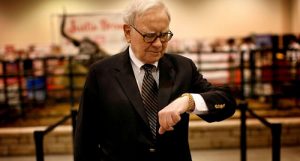Shoppers paying record 10.6% more for food than a year ago
Shoppers are paying a record 10.6% more for food than they were a year ago, figures show.
Overall shop price inflation accelerated to 5.7% in September, up from 5.1% in August, in another record since the British Retail Consortium-Nielson IQ index began in 2005.
Food price inflation rocketed past last month’s 9.3% to 10.6%, driven by the war in Ukraine, which is continuing to push up the price of animal feed, fertiliser and vegetable oil and is particularly affecting products such as margarine.
Fresh food products cost a record 12.1% more than last year, up from 10.5% in August, the highest rate for the category on record.
Inflation for store cupboard staples, such as pasta and tinned tomatoes, reached a record 8.6%, up from 7.8% a month previously, the fastest rate of increase for the category.
Although the summer drought diminished some harvests, other produce benefitted from the prolonged sunshine, leading to a fall in prices for fruit such as strawberries, blueberries and tomatoes.
Non-food inflation rose from 2.9% in August to 3.3%, largely driven by bigger hardware, DIY and gardening products hit hard by rising transport costs.
Read more:
Spending calculator: See which prices have gone up or down
Millions of people already behind with their household bills, new research suggests
Helen Dickinson, chief executive of the British Retail Consortium, said: “Retailers are battling huge cost pressures from the weak pound, rising energy bills and global commodity prices, high transport costs, a tight labour market and the cumulative burden of government-imposed costs.
“And, with business rates set to jump by 10% next April, squeezed retailers face an additional £800m in unaffordable tax rises.
“Government must urgently freeze the business rates multiplier to give retailers more scope to do more to help households.”
Mike Watkins, head of retailer and business insight at NielsenIQ, said: “With food and household energy prices continuing to rise, it’s no surprise that NielsenIQ data shows that 76% of consumers are saying they expect to be moderately or severely affected by the cost-of-living crisis over the next three months, up from 57% in the summer.
“So households will be looking for savings to help manage their personal finances this autumn and we expect shoppers to become more cautious about discretionary spend, adding to pressure in the retail sector.”


